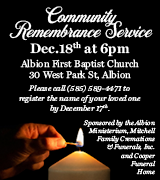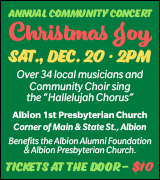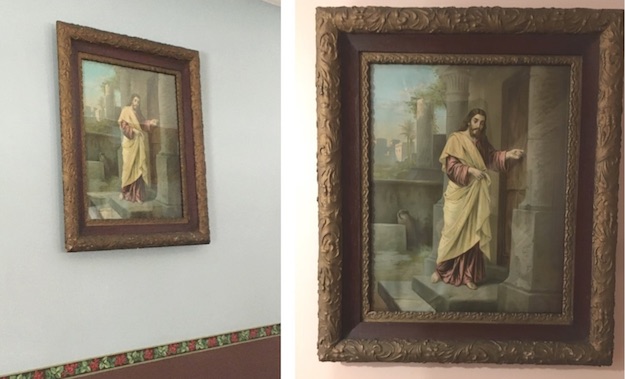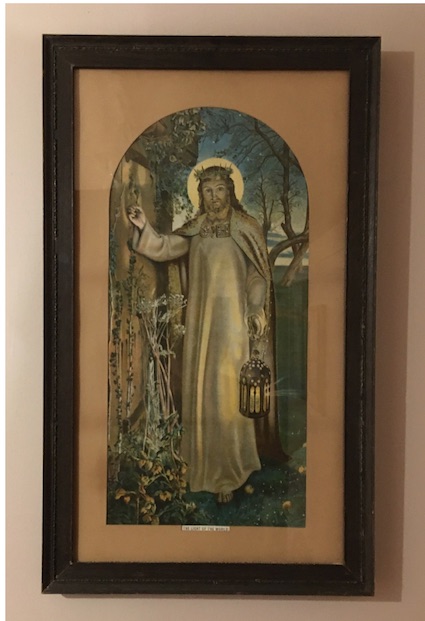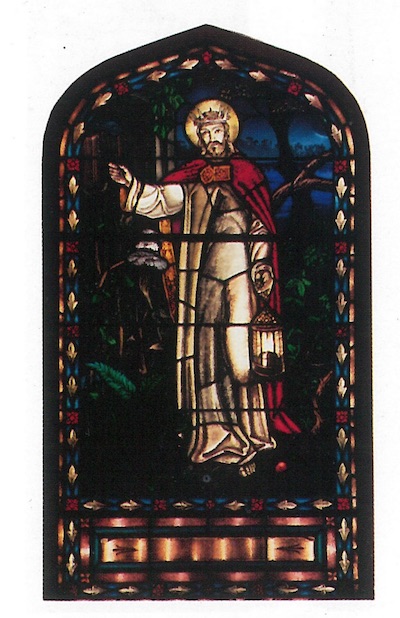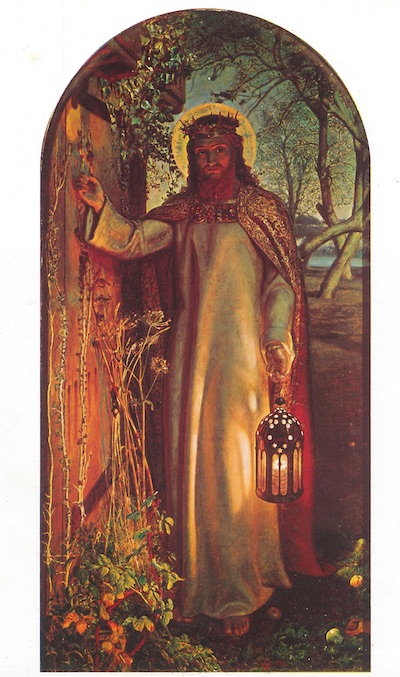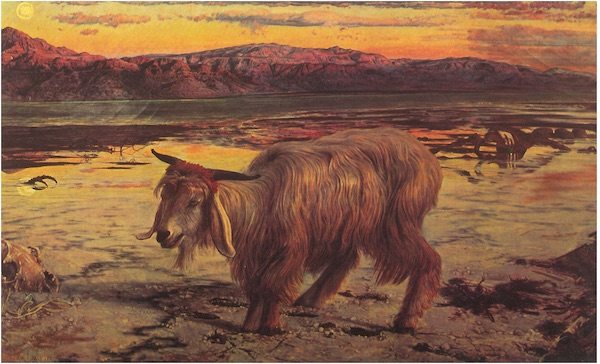Historic Childs: Popular Images of Yesteryear, Part 8 – The Light of the World
By Doug Farley & Bill Lattin – Vol. 3 No. 9
CHILDS – This late 19th century lithograph of Jesus knocking at the door is one of several Victorian prints which hang in the Cobblestone Church. It is a variation on a famous painting entitled, “The Light of the World,” by William Holman Hunt, completed in 1853. Our example at the Museum is simply based on the text:
“Behold I stand at the door and knock. If anyone listens to My voice and opens the door, I shall come in to him and dine with him, and he with Me.” Rev. 3:20
The print above, circa 1900, from a private collection, is much more like Hunt’s original painting, also based on the text:
“I am the Light of the World, the one who follows Me will not walk in darkness, but will have the Light of Life.” John 8:12
With these two texts in mind, biblical validation is given for what became a very popular evangelistic image, widely reproduced in many forms and places.
One of the most outstanding examples of this subject may be found in the Carlton United Methodist Church, off Archbald Road. Here Hunt’s famous painting was recreated in stained glass by Haskins Studio from Rochester NY, circa 1935, for the Waterport Methodist Church. When that church building was given up in 1988, the window was moved to its present location. It is the only stained glass window of this subject matter in any Orleans County church.
Great symbolism was used by the artist in portraying Jesus in this manner. In essence, He is knocking at your door, but because there is no latch on the outside, you must open it up from the inside in order let Him into your own heart. The lantern Jesus holds is the light which has become symbolic of Him.
Phillips Brooks (1835-1893) in his famous hymn, “O Little Town of Bethlehem” wrote, “Yet in thy dark streets shineth, the everlasting Light.” It portrays the moment when human destiny hangs in the balance, when Divine Love patiently waits upon human reluctance. Its basic message calls for a decision.
Jesus is dressed in a white robe which in itself is a symbol of light, faith, joy, life and purity. Over it is draped a red mantel which symbolizes divine love. This is fastened with a large breast plate which signifies His priesthood. A golden crown denotes Him as Christ the King. Entwined with this is a crown of thorns, which signified suffering and the crucifixion, while the halo reflects His holiness. He stands at the door of the human heart, barred with nails and rusty hinges. The threshold is overgrown with brambles as He approaches in the night time.
He brings a twofold light. The lantern represents the light of consciences, for it reveals sin. Its radiance sheds light upon the door, thicket and an apple on the ground-a symbol of the first sin. The other light is from Christ’s face which proclaims hope. His expression is one of tenderness, thus asking admittance.
“There’s a stranger at the door
Let Him in.
He has been there oft’ before
Let Him in.”
Now for a moment, we return to our first print located in the Cobblestone Church. In this variation we note Jesus is dressed in a yellow or golden colored mantel which symbolically represents the goodness and bounty of God. By contrast however, the color purple of the robe underneath symbolizes His martyrdom.
The famous painting that these works is based on are shown here. It is located at Keble College in Oxford, England. It measures a little less than 36 inches in height.
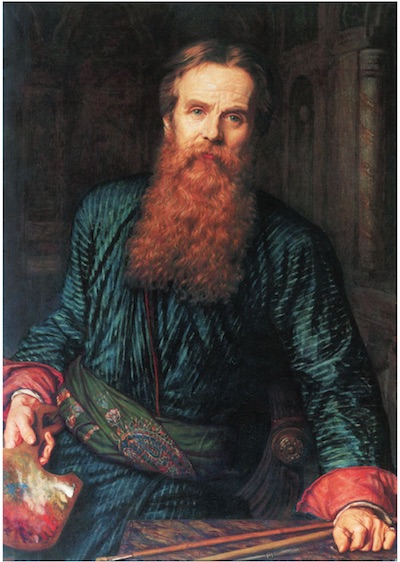
William Hunt (1837-1910), self-portrait, 1867
William Holman Hunt was born in London and studied painting at the British Museum and the National Gallery. In 1844 he entered the Royal Academy where he joined with two other artists, Sir John Everett Millais and Dante Gabriel Rossetti, to develop the Pre-Raphaelite theories of art.
In 1848 they formed the Pre-Raphaelite Brotherhood. During the 1850s, Hunt went to the Holy Land to portray scenes from the life of Jesus of Nazareth, aiming to achieve historical and archaeological truth. He returned to Palestine in 1869 and again in 1873 for further study.
The Pre-Raphaelite Brotherhood attempted to restore the artistic principles and practices regarded as characteristic of Italian Art before Raphael. They seemed to lower the exalted to the commonplace, but never aimed to protest injustice, ugliness or misery. Hunt strove to fuse truth, beauty and decorum in biblical and evangelical culture with which he was absorbed.
Another one of Hunt’s famous paintings is shown above. It is entitled “The Scapegoat,” 1854, which has a most haunting aspect of its overall imagery.
We end the story with Hunt’s famous painting, seemingly a prediction, entitled, “The Shadow of Death,” 1870-73.















